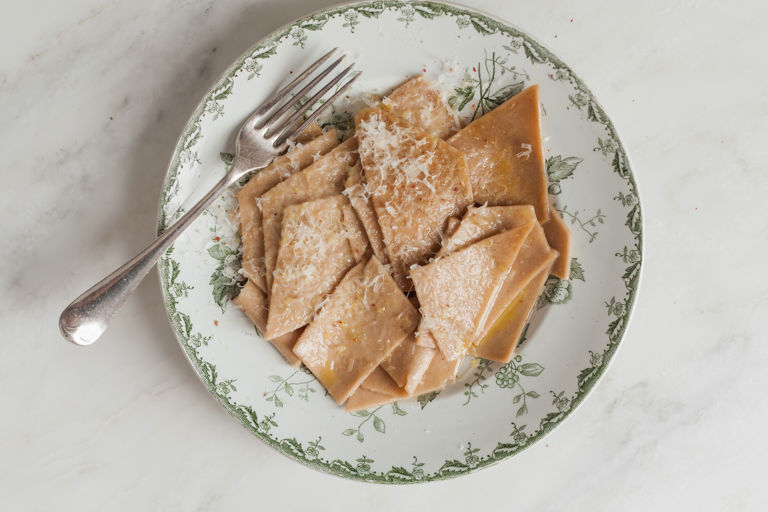Lasagne bastarde
Lasagne bastarde (also known as 'matte') are diamond-shaped strips of fresh pasta typical of the Lunigiana area, in northern Tuscany. They are made with a combination of plain flour and chestnut flour, the latter being a recurrent ingredient in the culinary repertoire of the region. The percentage of chestnut flour in the dough varies. Normally, it can account for up to 60% of the total. However, because chestnut flour is naturally gluten-free and the dough requires no eggs, the more you use the harder it’ll be for the pasta to stretch and hold together. Personally, I found that a fair 40% will ensure that the pasta rolls out easily while still being able to appreciate the characteristic sweet flavour of the chestnut flour in the final dish.
Traditionally seasoned with olive oil, black pepper and grated hard cheese to counteract the sweetness of the chestnut flour (which is the variant I’ve shared below), they can also be tossed with a sauce of tomatoes, leeks and sausage or lard. What’s important to note is that they need to be consumed immediately after they’ve been tossed in the oil or sauce, as they tend to glue together in a very unappetising way in a matter of minutes.
Ingredients
Metric
Imperial
Lasagne bastarde
- 300g of plain flour, sifted
- 200g of chestnut flour, sifted
- 1 pinch of fine sea salt
- 100ml of water, or as needed
- extra virgin olive oil, as needed
- 100g of pecorino, or Parmesan
- freshly ground black pepper, as needed
Method
Get in touch
Please sign in or register to send a comment to Great British Chefs.




